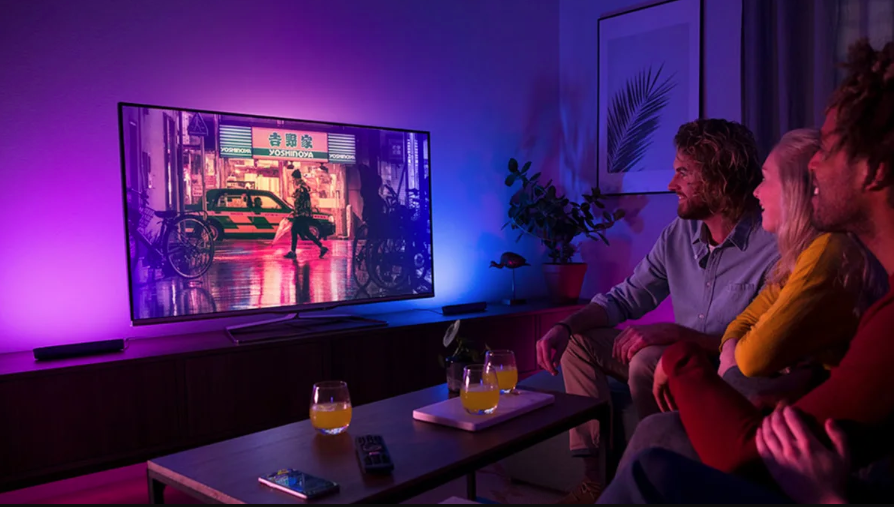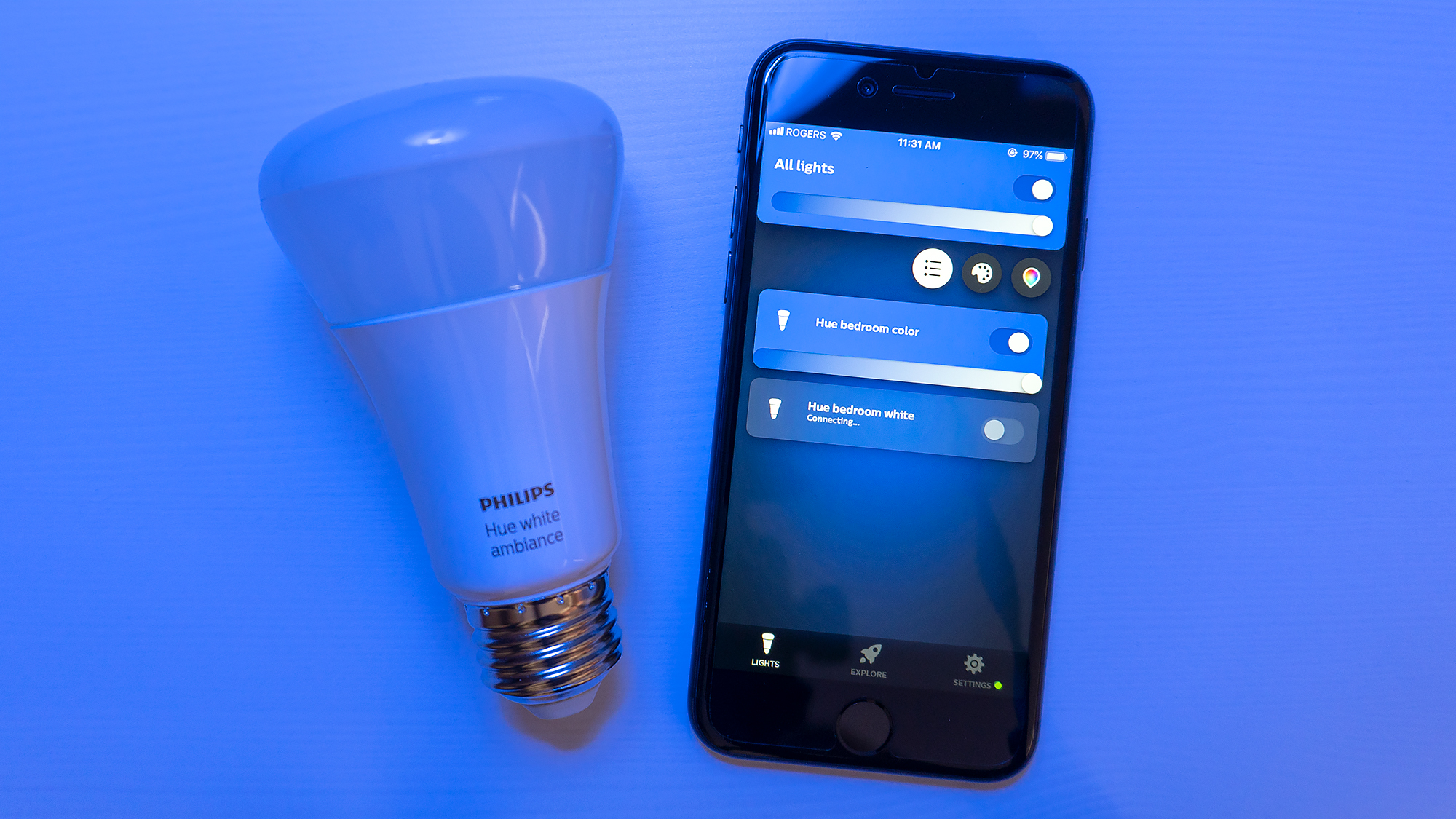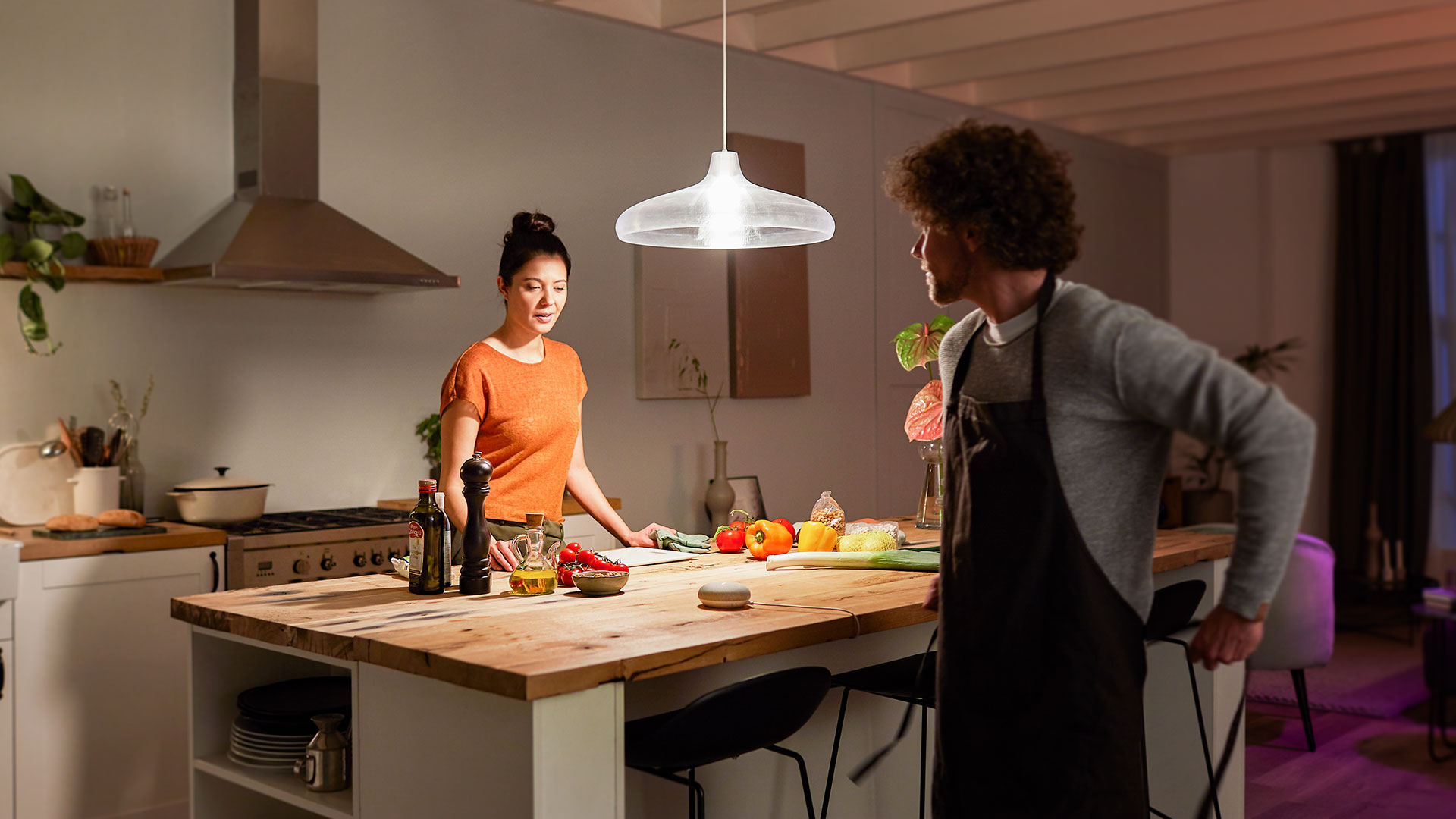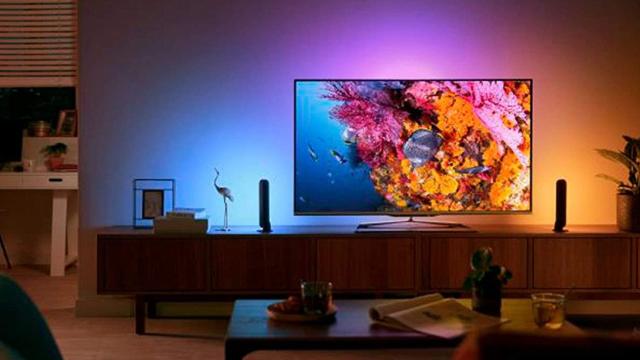Taking that first step towards implementing smart lights in your home can seem daunting and confusing. While you’ve likely been wowed by displays you’ve seen at other friends’ homes, or online, you’ve probably sat around scratching your head wondering how it all comes together. Thankfully, it’s a lot easier to achieve than you think and you don’t need to pay a fortune to get it installed. With a collection of Philips Hue smart lights on hand, getting started couldn’t be easier.
Philips Hue is one of the leading brands in the smart lighting industry, with bulbs that offer more than just colour changing capabilities. Its lighting options include handy features such as reactive lighting and security-focused features such as “Away From Home” mode.
By choosing Philips Hue, you’ll have an easy time starting small and building up a more complex lighting system as you go. So, as long as you know how to change a lightbulb, you can complete most of the installation all by yourself.
[related_content first=”1673971″]
What you’ll need

The brains of the Hue system is the Philips Hue Smart Bridge ($75). It’s not much to look at, but then the idea is that you’ll plug it in near your home’s router and interact with your Hue system via a smartphone app anyway. You can buy the Philips Hue Smart Bridge as a standalone device (you can pick one up via Amazon here) but if you’re starting out with Philips Hue, you’re almost always going to be better off with a starter kit that includes a few bulbs as well. You can grab one here for $128.
This is where it’s important to know what type of bulbs you’re going to be using, which relates to the fixtures you’ve already got.
For most Australian homes, that’s going to be either fixed downlights, or traditional screw or bayonet type bulbs. Screw type bulbs, AKA E27 bulbs ($89) rotate in to fit on a standard screw type head, while as the name suggests, bayonet bulbs, AKA B22 bulbs ($99) have protruding bayonet heads that twist into place to fit.
It’s pretty unusual to find a home with both types in play, but thankfully you can get Hue bulbs in either type and the Smart Bridge won’t care either way. However, buying the wrong type of bulbs for your needs is an annoying exercise.
If you’ve got downlights, you can get Hue-compatible models (here’s one on Amazon for $66), but they can be a little more pricey than their E27 or B22 counterparts.
Again, the Philips Hue Smart Bridge isn’t going to be fussed if you have a mix of downlights in some rooms and bulbs in others, because it can handle up to 50 different Hue lights once it’s configured. I’m concentrating just on simple house lights for this guide, but the Philips Hue system encompasses a huge range of table lamps, light strips, light bars, wall lanterns and even path lights that you can build towards as well.
The other reason to buy the starter kits, which typically come with a variety of different bulb types, is that they contain everything you need to set up the basics of a Hue system, although for real convenience it’s worth also considering a smart speaker such as an Apple HomePod, Google Nest or Amazon Echo so that you can add voice control into the mix.
The Hue app, which runs on Android or iOS smartphones is a clean and simple enough app to use, but there’s something truly special about switching lights on or off, or dimming them for movie night that is hard to beat.
One tip here when shopping — don’t buy the original round Philips Hue Bridge because it’s essentially obsolete and unsupported. That’s more likely to be a factor if you were buying second-hand in any case, but be sure to get the newer 2nd generation rectangular Bridge instead.
Simple Philips Hue set up

Getting Philips Hue up and running involves a few steps, but few of them are really all that difficult.
Firstly, download the Hue app to your smart device of choice from the relevant app store. Then place your Hue Bridge near your home router, and connect up its power and ethernet cables.
Once it’s powered up – which you’ll know because all four of the lights on the Hue Bridge will illuminate – you can open up the Hue App and tap on Settings and then Hue Bridges and finally Add Hue Bridge. Follow the onscreen instructions and the brains of your Hue light setup will be in place in no time flat.
From there, it’s a question of adding the bulbs that you’ve purchased. Again, this is a pretty easy process. Remove the old bulb (and either store it for future use or responsibly recycle it) and screw your new one into place. Power it up and then open up the Hue App. Head back to Settings, then Light Setup and then Add Light.
Each individual Hue Bulb has its own serial number, and you can enter this, but it’s nearly always easier to just let the Hue app search for any new lights in your network. However, that does mean it’s a smarter move to add lights one at a time rather than plug in a dozen and hope to guess which one is which after the fact.
Installation of each bulb allows you to give it a name and configure it into a room. Rooms can then be named so that you can perform larger scale actions, such as switching off all the lights in a room, or dimming selected lights.
While Hue calls them “rooms”, that’s an entirely arbitrary matter. There’s nothing stopping you declaring that all your upstairs lights are in the one room, and if you do that you can adjust them all at the same time if that suits your needs. There’s a lot of power in the rooms concept, especially if you pair it with a voice assistant speaker or two.
The actual capabilities of each bulb will vary by type as well as the price you pay. The most basic Philips Hue White bulbs provide a simple soft white light with dimming capabilities – you don’t need a separate dimmer switch for that, either – while the colour ambience lights provide optional coloured lighting effects to suit particular moods and needs.
The Hue app can also set what it calls Routines, which let you set up lighting patterns around common activities, such as having select lights slowly come on as you wake up in the morning, or fade away as you drift off to sleep at night. You can enable the Hue app to work on a geolocated basis so that lights come on or off as you go to and from your dwelling place, or create custom routines to meet other needs.
What happens if…?

Smart lighting takes a little getting used to, and there’s a few common tripping points for many new users.
Will Hue bulbs last as long as other bulbs?
Generally yes. There’s some variance across Hue products, but as an example, the basic white bulb should be good for 25,000 hours of operation with a two-year warranty. That can’t cover every eventuality – if you smash the Hue Bulb with a brick it’s still smashed, same as any other bulb – but it’s in-line with general expectations for these kinds of lights.
What happens if I switch the bulb off at the wall?
Hue bulbs operate in a super low power state when the Hue app switches them “off” even when the switch is on at the wall. However, if you do switch them off from a traditional switch, then the Hue app won’t be able to talk to the bulb – it has no power, after all – and you’ll have to manually switch it back on again before you can interact with it again.
Can I update the software on my bulbs?
From time to time Philips issues firmware updates to its Hue devices, which mostly happens automatically in the background, although you can force this by opening the app, going to Settings and then Software update. The update process can take some time, however, so it’s best to do so at a point where you don’t need a given bulb if the going is slow.
Can I uninstall Hue if I move or decide I don’t like it?
Absolutely you can in both situations. One of the nice things about the Hue system is that most of it is designed to be plug and play, which means it can just as easily be uninstalled and either packed away for your move or packed away permanently depending on your needs.
All you need to do is remove each bulb and pack it away, and likewise unplug the Hue Bridge from power and your network. If you’re moving you may want to consider renaming or reconfiguring your Hue lights in your new abode unless it very closely matches the place you’re moving from, but this is easy enough to do via the Hue app.
If you’re interested in sprucing up your home with some smart lighting, but are turned off by the price tag on the Philips Hue line, we’ve already got you covered with some (mostly) cheaper alternatives.
